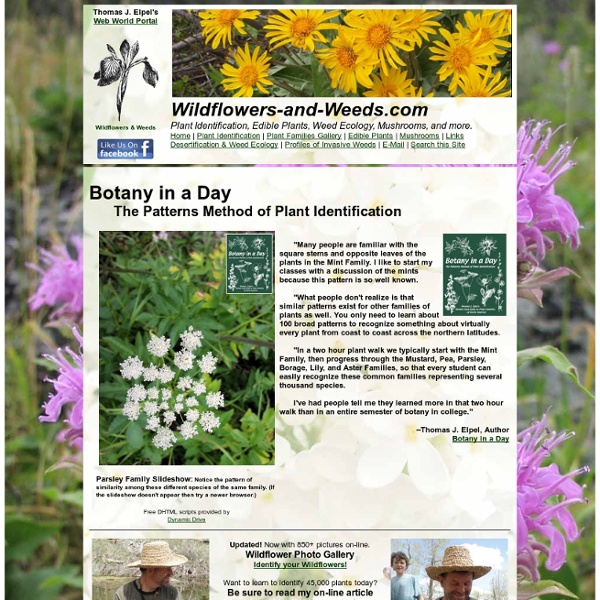



Poisonous Plants Basics Plants are amazing creatures that produce many great benefits for human consumption. We get most of our medicines from plants, our foods and even our beauty products. Still, there are poisonous plants among the wild edible plants that people need to be aware of when it comes to consuming them. To be responsible foragers we should have a few basic pieces of knowledge in our pockets to stay safe. So what are poisonous plants anyways? If you remember one simple fact, it will help you realize why plants produce certain compound to deter predators – PLANTS CANT RUN! If you were to accidentally chomp on a Skunk Cabbage you would become very familiar with oxalate crystals that are like needles that stab you all the way down! Besides defending themselves, plants also make poisonous or toxic substances as byproducts from their usual metabolic processes. Ok, so you are out with your friends harvesting Cattail and you are a new forager. Stay Calm and Act Fast. Know your plants and plant families!
World History for Us All Herbal Directory: Penn State Univ. Information on common herbs for cultivation and culinary purposes. Herbs are classified by their use - aromatic, cosmetic, culinary, decorative, dye, medicinal and ornamental. Important Disclaimer The information shared freely on these pages is meant for cultivation of the crops and for culinary use only. Other uses are simply noted, so that readers are aware that they exist. Contact Michael Orzolek, Professor of Vegetable Crops The Herb directory was developed by Keppy Arnoldsen, Aimée Voisin and Jen Johnson under the guidance of Dr. Identify That Plant: Master The Skill Of Plant Identification Non-Edible Poisonous Flowers Chart Non-edible Poisonous Flowers This chart is a list of the most commonly-known poisonous plants and flowers to avoid while selecting edible flowers. It is not complete, so just because you do not see it listed here, do not assume it is safe to eat. • Edible Flowers Chart • Edible Flowers Information and Recipes • Herb Information • Spice Information • A to Z Recipes and Food Disclaimer: This is a list of the most common poisonous plants and flowers but it is by no means complete. A to Z Recipes and Food | Articles by topic
Applied and Environmental Microbiology Top 10 Most Dangerous Plants In the World 1. Most likely to eat a rat Giant Pitcher Plant: Nepenthes attenboroughii Discovered more than 5000 feet above sea level on Mount Victoria in the Philippines, the giant, carnivorous pitcher plant secretes a nectar-like substance to lure unsuspecting prey into a pool of enzymes and acid. A series of sticky, downward ribs makes it nearly impossible for trapped prey to escape. The plant's 30-centimeter diameter is large enough to trap unlucky rodents, but insects are its most common meal. 2. Castor Bean Plant: Ricinus communis Castor-bean plants can be purchased at just about any garden center, despite containing the deadly poison ricin. 3. Western Water Hemlock: Cicuta douglasii Deemed the most "violently toxic plant that grows in North America" by the USDA, the water hemlock contains the toxin cicutoxin, which wreaks havoc on the central nervous system, causing grand mal seizures--which include loss of consciousness and violent muscle contractions--and eventually death, if ingested. 4. 5.
Poisonous Plants 2 Plants basically poison on contact, ingestion, or by absorption or inhalation. They cause painful skin irritations upon contact, they cause internal poisoning when eaten, and they poison through skin absorption or inhalation in respiratory system. Many edible plants have deadly relatives and look-alikes. Preparation for military missions includes learning to identify those harmful plants in the target area. Description: The castor bean is a semiwoody plant with large, alternate, starlike leaves that grows as a tree in tropical regions and as an annual in temperate regions. Habitat and Distribution: This plant is found in all tropical regions and has been introduced to temperate regions. Description: This tree has a spreading crown and grows up to 14 meters tall. Habitat and Distribution: Chinaberry is native to the Himalayas and eastern Asia but is now planted as an ornamental tree throughout the tropical and subtropical regions. Habitat and Distribution: India, east to Southeast Asia.
Molecular Expressions Microscopy Primer: Introduction to Microscopy Introduction to Optical Microscopy,Digital Imaging, and Photomicrography This treatise on optical microscopy is divided into several sections that are available through the links displayed immediately to the left (in the darker navigational boxes) and below. In order to print the entire microscopy primer as a paper document, you must download each link independently, send the file to your printer, and put the results together. In the Bibliography, we have included links to other works on optical microscopy and our section on Web Resources contains links to other microscopy sites on the Internet. Frequently Asked Questions - Mortimer Abramowitz, senior microscopist at Olympus America Inc., answers the 50 most commonly asked questions about microscopy and photomicrography. Concepts and Formulas in Microscopy - Many of the basic concepts in optical microscopy can be distilled into a few rules and formulas. Innovations in Light Microscopy - Noted microscopist and author Martin L.